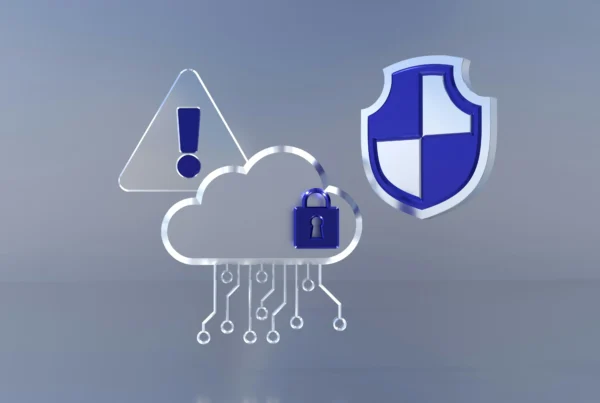
It allows businesses to securely store, restore, back up their data and ensure its continuity against disaster situations. Cloud-based services allow data to be stored through cloud technology without the dependence on a physical server, thereby reducing the risk of data loss. For businesses, disaster recovery methods such as cloud services and data backup are very useful. Cloud storage services allow data to be stored securely. It offers businesses a large storage capacity, helping to back up data and restore it when needed. It is a secure storage system that provides high security and accessibility of data across multiple regions or cross-region backups.
Cloud backup services automatically provide backups in the cloud and allow backups to be made based on a specific timeline or event. Backups ensure that data is securely encrypted, compressed, and stored. Cloud platforms provide specialized services for virtual server backup. With these services provided, a complete image of the virtual servers is created and backups are restored when necessary. Thus, in case of server crash or data loss, you will quickly ensure the continuity of the data.
Cloud platforms ensure business continuity by providing disaster recovery services. These services allow you to quickly move your applications or data to another server in case of disasters. You can continue your business without being affected by disasters such as data center outages, natural disasters or cyber attacks. It services always enable businesses flexibility, business continuity, security and scalability in terms of data backup and disaster recovery. It ensures the security of data in accordance with the needs and budget of the enterprises and this data is collected quickly against any disaster situation.
How to Make a Data Backup?
Data backup ensures that important data can always be retrieved if the important data is lost, unusable or damaged. The first step in backing up data is to decide which data not to back up. By identifying data that is critical and incorporating it into a backup plan on a regular basis, you can increase its continuity and save data that is important to data integrity. Once you’ve decided how often to back up data, you can make it happen daily, weekly, monthly, or over a period of time. Backup duration and frequency may vary depending on the risk of data loss, data changes, and business needs. Backups can be used in different ways by choosing backup methods.
Protecting Backup Data: Necessary precautions must be taken to ensure the security of the backed up data. You can protect data backed up using the encryption process and protect against unauthorized access.
Storing Backups in Different Locations: Storing backups only in one place can result in data loss in the event of a disaster or problem. You can reduce negative risks by securely storing backups in a different location.
Automating the Backup Process: By automating backups throughout the backup period, you can reduce human error and ensure consistency in terms of data. You can also use a scheduling tool or scheduling to schedule and frequency backups.
Backup Checks and Verification: You can periodically check and verify that backups have been successful, and then perform restore tests to ensure that the backup process is working correctly.
Backup Software: With backup software, you can make it easy to automatically back up and restore your data. With this software, you can support specific files, directories, and full system backups, as well as uninterrupted backups.
Cloud Storage: Cloud-based data backup services always store your data securely in the cloud. You can use these services to make backups that are scheduled on an automated basis.
External Storage Devices: You can use portable storage devices such as external hard drives, network-attached storage devices, and portable memory. You can manually copy data to these devices and sync it automatically thanks to backup software.
What Is the Most Effective Solution for Disaster Recovery?
Among the most effective solutions in terms of disaster recovery is a comprehensive strategy aimed at minimizing the effects of disasters that interrupt the activities of enterprises. There are certain situations that need to be considered in order to be able to collect and maintain quickly in disaster situations between enterprises. The business needs to assess potential disaster scenarios and determine their impact. Events such as natural disasters, fires, and cyber attacks include disasters. The analysis of risk situations forms the basis of a disaster recovery plan. For every business, disaster recovery needs can take different forms. A risk assessment is required to determine the most effective solutions according to the needs and resources of the enterprises.
Disaster recovery plans and processes should be regularly reviewed, improved and then tested. It ensures that the plan stays up to date and that it has the ability to deal with unexpected situations through continuous improvement and testing. You can get help from disaster recovery consultants or service providers. These experts can create a disaster recovery plan according to the needs of the enterprises and prepare this business for disaster situations. Adding business data on a regular basis and keeping backup copies secure is very important for businesses. Local storage can perform backup and data recovery by using cloud-based backup services to devices. Testing and verifying data recovery processes is critical.
Effective and fast communication should be provided to business employees, customers, suppliers and other stakeholders. On the other hand, emergency communication tools should be determined and tested in advance. In disaster situations, alternative workplaces or remote access facilities should be provided where employees can work safely. Alternative workplaces enable businesses to continue their activities quickly and safely. Businesses create a detailed business continuity plan to ensure their continuity against disaster situations. These plans include staff roles, communication methods, alternative work environments, data access, and customer service. These plans should be kept up to date and reviewed regularly.
By identifying potential risks for businesses and analyzing their potential impact on business continuity, you can learn what to do during disaster recovery. Disaster scenarios such as natural disasters, floods, cyber attacks and fires should always be considered. Catastrophic situations can be different for every business. It is necessary to follow certain steps to analyze in detail by creating a disaster recovery plan against the needs and risks of your business. In business continuity, disaster recovery issues and in cases requiring expertise, support can be obtained from professional consultancy service providers. These experts can offer solutions tailored to the specific demands of businesses. In terms of service provider in general, one of the most preferred companies in recent times is the Global IT company.
In order to ensure communication in disaster situations, a communication plan should be created, communication lists and emergency communication tools should be determined. Alternative channels for communication between and outside businesses need to be considered. In order for employees to work safely in disaster situations, the workplace or remote working places should be arranged. In order to maintain business continuity, computers and other equipment should be provided to employees. By regularly backing up data and storing copies of data in a safe place, you can take precautions against any disaster.



